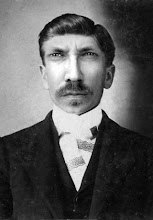
 I've been watching other movies to see how they handle gore, accidents, violence, hysteria. A crucial scene of WOMAN'S PICTURE concerns a woman who lives inside her head, and the whole segment, her story, is very insular, ultimately concluding in an act of trauma.
I've been watching other movies to see how they handle gore, accidents, violence, hysteria. A crucial scene of WOMAN'S PICTURE concerns a woman who lives inside her head, and the whole segment, her story, is very insular, ultimately concluding in an act of trauma.The woman works as a maid in an out of the way motel. She's a very repressed character and if you go by critic Mary Ann Doane's general categories of "Weepy" film thematics (these are: medical discourse, love story, maternal conflict, paranoid heroine), this character would fall under paranoid. She's somewhere between Hitchcock's Rebecca, Cukor's Gaslight and, using a much later example, Altman's Images.
Images interests me because in many ways it updates the paranoid woman of those earlier films. In movies like Rebecca and Gaslight, hysteria has a legitimate cause in some external source. Someone is driving the heroine mad. Her craziness stems essentially from her inability to convince herself and others that it isn't all in her head. Images dispenses with those theatrical devices. Susannah York truly is mad and her madness is never explained or justified. It represents a wall between her and everyone else.
At the same time, the older template is observed in the sense the Images narrative is viewed through the heroine's perceptions. In Rebecca and Gaslight, you can never be sure whether or not the protagonist is "seeing" things. In Images, you know very early on that she is; you're seeing them too. The film isn't a process of parsing through these visions to distinguish between fact and fantasy. The visions are presented without distinction, grouping the film among conspiracy narratives of the sixties and seventies, where the source of threat was impossible to define or pin down.
I always pictured the maid's story with noir overtones, so it helped to find the following in Women's Film and Female Experience by Andrea S. Walsh: "Film noir left its mark on all Hollywood cinema, including the women's film. Mildred Pierce [for instance] represents a tenuous marriage of the women's film and the film noir. Another uniquely feminine variant of film noir arose, simultaneous with the emergence of the classic noir narrative. Featuring victimized, mad, or terrified women, and usually set in ornate, claustrophobic interiors, these films express distrust in love and family relationships."
In WOMAN'S PICTURE, violence breaks open that claustrophobia, but in doing so, permanently ruptures any possible connection with anyone else's reality. Images, too, erupts in violence, but many times over. York is always going there, imagining blood, calamity, rape, or otherwise. What I want is slightly different. The maid dreams of escape, of getting in a fast car, tearing out. Everything about her existence at the motel is routine. Every guest brings the possibility of change. Her accident is unexpected for the viewer, and a surprise to her, but it also has an inevitability to it that she's been anticipating from the beginning.

I want it to be chaotic. It should have that sense accidents do, where everything happens too quickly to fully apprehend. And I want to show just enough. Much of the incident takes place on screen but through the distortion of a pebbled glass partition which leads into the bathroom, an architectural feature which provides an early cue that the things the maid sees are often ascertained through various filters. The accident itself occurs in full view. The room's guest returns unexpectedly. She rushes into the room when she sees what's happened. We did most of it in one take, from a distance, with a single close-up of the wound. Cutting this together is a challenge involving what to show and when. Show too much and you lessen the impact. Show too little and there is none.
(Production stills by Tommy Kha feature Gia Mora on the left, Amy Lavere on the right)




No comments:
Post a Comment